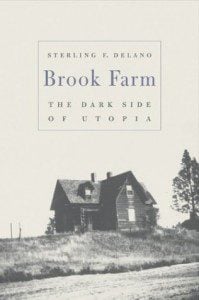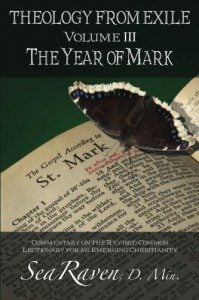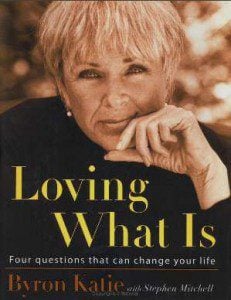In Mark’s fast-paced style, we see three different days of Holy Week in chapter 11 alone. The first eleven verses are what we celebrate as Palm Sunday. But in verse 12, we see a clue (the words, “On the following day”), which indicate that the events regarding the fig tree and the aggression against the Temple happened the next day. Monday continues through Mark 11:19, where we read that, “when evening came, Jesus and his disciples went out of the city.” And in verse 20, Mark lets us know that Tuesday has arrived when he describes the second encounter with the fig tree as happening, “In the morning.”
Although Holy Week liturgies have tended to focus on Palm Sunday, Maundy Thursday, Holy Friday, and Easter Sunday, the events of “Holy Tuesday” are much more extensively described in Mark than any of the other days. All total, Mark devotes 115 verses to the Tuesday of Jesus’ last week, a statistic which is helpful to keep in mind when considering the relatively paltry eleven verses Mark affords to Palm Sunday. And Mark spends more than half of those eleven verses detailing the odd procurement of Jesus’ donkey.
Anyone familiar with the book of Zechariah would immediately recognize why Mark spent so many precious verses on the simple act of getting the donkey. Zechariah 9:9 says,
Rejoice greatly, O daughter Zion! Shout aloud, O daughter Jerusalem! Lo, your king comes to you; triumphant and victorious is he, humble and riding on a donkey, on a colt, the foal of a donkey. He will cut off the chariot from Ephraim and the war horse from Jerusalem; and the battle bow shall be cut off, and he shall command peace to the nations; his dominion shall be from sea to sea, and from the River [Euphrates] to the ends of the earth.
Many commentators have speculated that Mark emphasizes the details of retrieving the donkey to give his readers time to have “ears to hear” the allusion to Zechariah’s prophecy: the one who comes riding on a donkey will nonviolently bring peace.
This connection between Zechariah and Mark is not merely the speculation of modern scholars. Remember that both Matthew and Luke had a copy of Mark on their desks when they wrote their respective Gospels a decade later. And when Matthew copied Mark’s account of Palm Sunday, he adds in Matthew 21:4 that, “This took place to fulfill what had been spoken through the prophet.” Then Matthew quotes Zechariah to make clear Mark’s allusion.
But here’s where the story gets strange. Whereas Mark simply has Jesus riding a donkey colt, Matthew curiously switches into the plural. In Matthew 21:6-7 if you read closely, you’ll notice that it says, “The disciples went and did as Jesus had directed them; they brought the donkey and the colt, and put their cloaks on them, and he sat on them.” Matthew’s version sounds like Jesus rode in on both beasts at the same time, straddling two animals like a circus act.
In Matthew’s defense, Zechariah said that the prophesied one would come “on donkey, and on a colt, the foal of a donkey.” But any Hebrew scholar would tell you that Zechariah was simply speaking poetically using Semitic parallelism, which was commonly used to describe the same object in two different ways. But Matthew, reading the Greek translation of Zechariah (in the Septuagint), may have misread the prophet as speaking literally, and then changed Mark’s account to conform to Matthew’s understanding of Zechariah’s prophecy. In other words, many scholars have maintained that Matthew must have thought, “If Zechariah said two animals, then Jesus must have ridden two animals no matter how odd that seems.”
This alteration is one of those cases that some scholars gleefully point out to show inconsistencies in the Bible. My goal is not to claim that the Bible is inerrant. Rather, the more I study the Bible, the more I am convinced not that the biblical writers were infallible or perfect, but that the biblical authors are operating at a much more sophisticated and challenging level than is typically recognized today.
The historical Jesus scholar John Dominic Crossan has sought to debunk the argument that Matthew was a scriptural literalist who altered Mark’s story to the absurd length of Jesus riding in on two animals at the same time to conform to Matthew’s misreading of Zechariah. Crossan proposes what I believe to be a much more compelling interpretation of Matthew. Crossan writes that Matthew [my emphasis]:
wants two animals, a donkey with her little colt beside her, and that Jesus rides “them” in the sense of having them both as part of his demonstration’s highly visible symbolism. In other words, Jesus does not ride a stallion or a mare, a mule or a male donkey, and not even a female donkey. He rides the most unmilitary mount imaginable: a female nursing donkey with her little colt trotting along beside her.
I find Crossan’s reading compelling because Jesus riding an unmilitary mount matches the rest of the Zechariah prophecy — that the one who comes riding on a humble donkey into Jerusalem will nonviolently bring peace. Remember the language from Zechariah about “cutting off the chariot, war horse, and bow into to command peace.”
This interpretation is even more convincing when you consider that historically triumphal entries into Jerusalem would have been exactly the opposite of what Mark, Matthew, and Zechariah described. The triumphant military leader would not have come nonviolently on a humble donkey to cut off the chariot, war horse, and bow; but would have come riding a chariot and war horse and wielding a bow or other weapons.
Crossan notes that in 332 BCE, three centuries before Jesus’ Palm Sunday entrance, Alexander the Great, having conquered “Tyre and Gaza after terrible sieges . . . Jerusalem opened its gate without a fight.” And we can “Imagine the victorious Alexander entering Jerusalem on his famous war-horse, the black stallion Bucephalus.”
Similarly, Crossan highlights that the custom likely would have been for Pilate to make a similarly militaristic triumphal entry to Jerusalem — with war horse, chariot, and weapons — each year in the days before Passover to remind the pilgrims that Rome was in charge. Such a demonstration would have been especially pertinent at Passover since Passover was explicitly a celebration of the liberation of the Jews from slavery in Egypt. Thus, Jesus’ subversive donkey ride reminded all those waving Palm branches that Rome was the new Egypt, and the Emperor was the new Pharaoh.
In many ways the lampooning and satire are the easier part. The next day, Jesus continued the trajectory that had begun with his unusual entry to Jerusalem when he overturned the tables in the Temple to interrupt, if only briefly, business as usual. As indicated by the odd symbolism of the fig tree, Jesus’ issue was that the current religious and political establishment, like the troublesome fig tree, was not bearing fruit.
Suddenly, we find Jesus making broad, increasingly public and controversial demonstrations in the big city of Jerusalem in the middle of Passover (the height of the pilgrimage season) in contrast to merely making controversial teachings in the small towns and villages around Galilee. I do not think that Jesus wanted to die, but his passion for justice and his anger at injustice — a passion and anger he inherited from the Hebrew prophets before him — led him to take increasingly large risks to show the contrast between the status quo (where Herod was king) and the kingdom of God. These risky acts of nonviolent activism led directly to Jesus’ tragic martyrdom.
This account is not to say that following Jesus necessarily means we will die a tragic death. There are those like St. Francis of Assisi, Clarence Jordan, and Dorothy Day who followed Jesus in radical, controversial ways and died of old age. But there are also those like Oscar Romero, Martin Luther King, Jr., and Gandhi who — like Jesus — were killed when they risked following Jesus’ way. Thus [my emphasis]:
Rosa Parks is an imitator of Christ, not because she suffered for taking her stand (or keeping her seat, in her case), but because she had the courage to believe in her own dignity and fought for it in spite of the conflict that resulted. Nelson Mandela is an imitator of Christ, not because he suffered in prison, but because he held out for peace and justice, and led a nation to resurrection. In each case it is not the suffering that is redemptive, but the courage to pursue justice in the face of pain and evil.
This Holy Week, may Mark’s story of Jesus continues to haunt us, to challenge us, and to inspire us as we discern how God is calling us — today, in our time and place — to follow the Jesus’ risky way of nonviolent activism, loving-kindness, and gracious compassion.
Notes
1 For Crossan’s interpretation of Palm Sunday, I am drawing from the study guide he wrote to accompany the 2009 DVD series First Light: Jesus and the Kingdom. However, for a less-expensive alternative to buying the DVDs, I recommend his book co-written with Marcus Borg, The Last Week: What the Gospels Really Teach About Jesus’s Final Days in Jerusalem, which, however, was published in 2006 and does not include Crossan’s interpretation of Matthew 21 about the female donkey and coal.
2 “Rosa Parks is an imitator of Christ” — see John R. Mabry, Crisis & Communion: The Remythologization of the Eucharist – Past, Present, and Future (Berkeley, CA: Apocryphile Press, 2005), 129.
The Rev. Carl Gregg is the pastor of Broadview Church in Chesapeake Beach, Maryland. Follow him on Facebook (facebook.com/carlgregg) and Twitter (@carlgregg).












